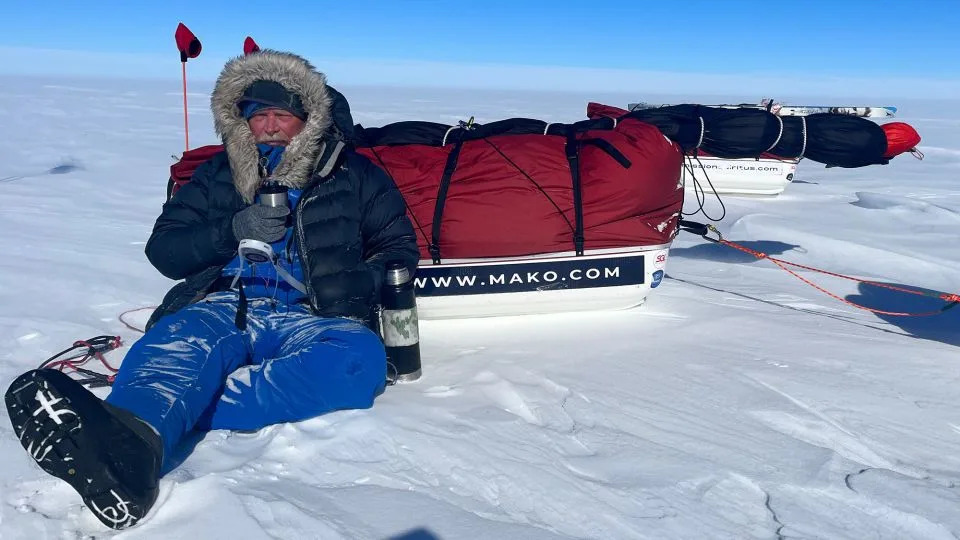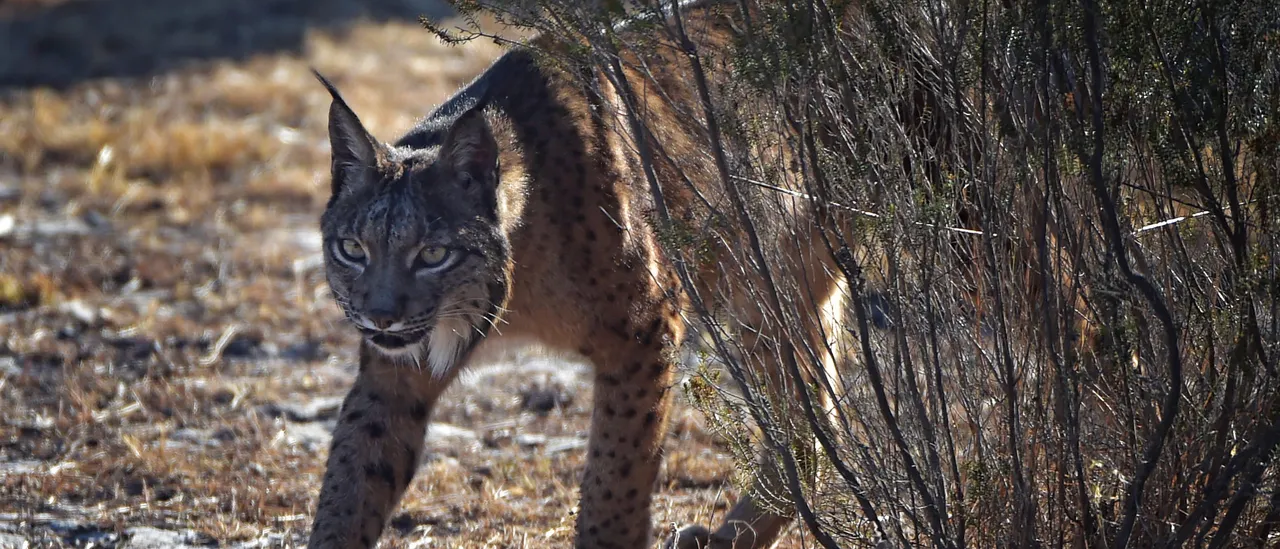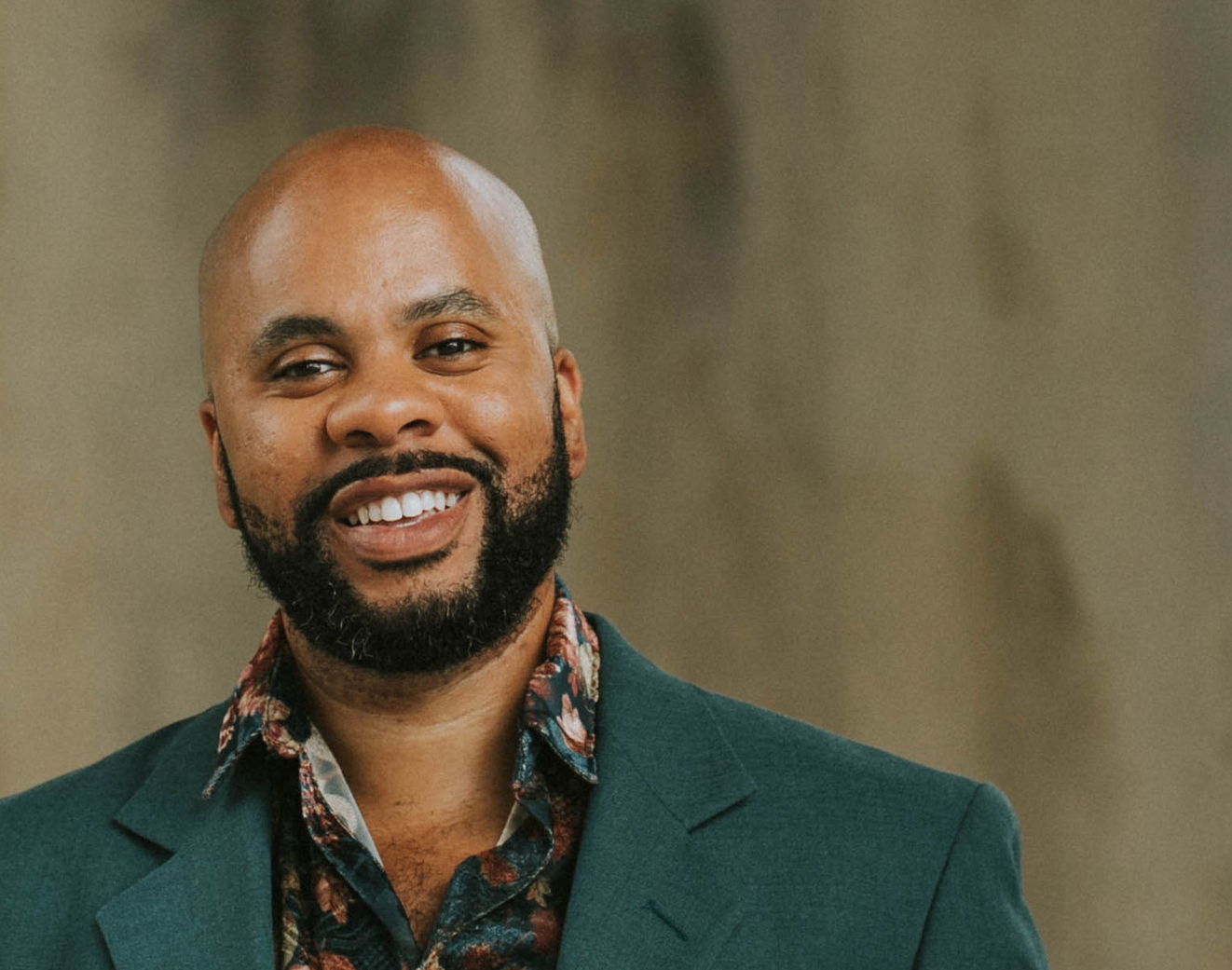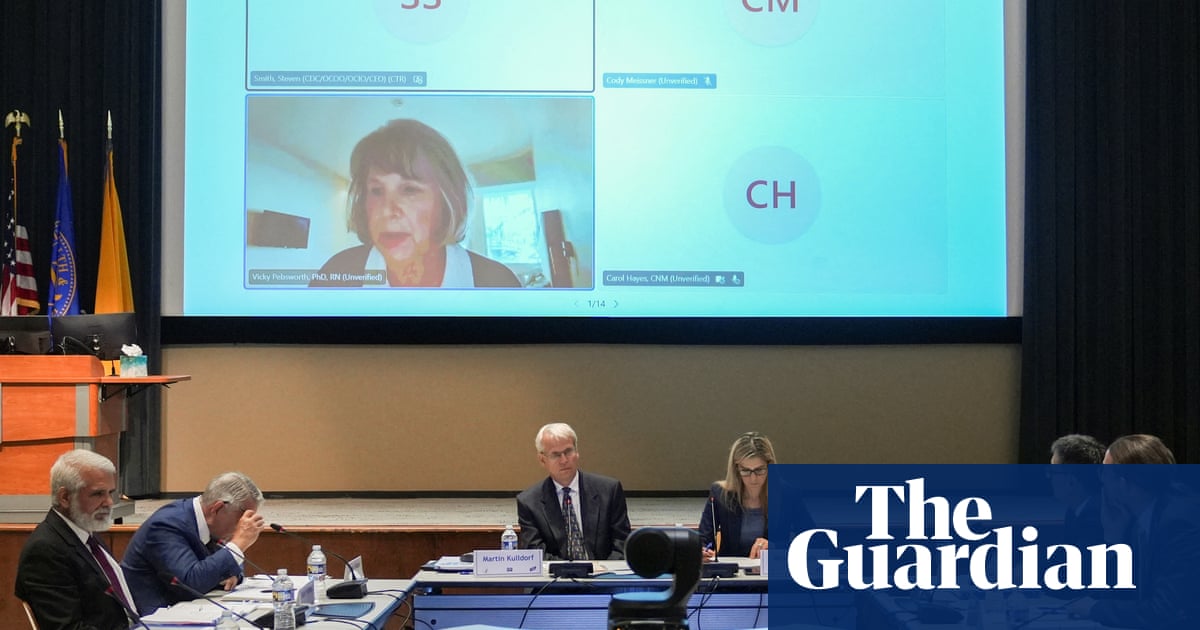Polar Explorer Maps Microplastic Spread in Earth’s Remote Regions

Crouched low in one of the coldest, remotest places on Earth, polar explorer Alan Chambers searched for an invisible threat. Traveling with fellow former Royal Marine Dave Thomas, he spent two long months skiing 715 miles (1,151 kilometers) — completely unassisted — from the Hercules Inlet on the coast of Antarctica to the geographic South Pole. The pair hauled a sled heavily loaded with supplies and equipment, as well as an extra one for snow samples, all while battling high winds, bitter temperatures, and disorienting whiteouts.
“I built a specialist sledge with a perfectly crafted insert inside,” Chambers explained. “Each evening I’d get on my hands and knees, lay on my belly upwind from the camp and scrape the snow at minus 35 to fill the tins, which we then logged and photographed.” This effort, completed in January 2024, marked Chambers’ first expedition in partnership with leading climate scientists at Columbia University to map the spread of microplastics and nanoplastics across the globe.
Understanding the Threat of Microplastics
Microplastics, minuscule bits of plastic that break off larger products, are smaller than a pencil eraser, measuring less than 5 millimeters. Once they degrade further, they are labeled nanoplastics, which measure less than 1 micrometer, or one-thousandth of a millimeter. Their microscopic size makes them difficult to observe and quantify. Nevertheless, research shows they’re ingested by hundreds of species — including humans.
A recent study revealed that the amount of plastic now found in human brains is around 50% higher than what it was a decade ago.
Research into the impact of such pollution on human health is ongoing, but it is known that nanoplastics can potentially interrupt cellular processes and deposit endocrine-disrupting chemicals that can interfere with the reproductive system. The impact on certain forms of cancer is also being researched.
Mission Spiritus: A New Frontier
Chambers’ collaboration with Columbia University aims to discover how regions largely untouched by humans are impacted by plastic waste. Their hope is that analysis of these samples, a process already beginning to deliver intriguing results, will provide scientists with the evidence necessary to influence environmental policy and drive systemic change in the future.
“Each mission is designed to push boundaries — both physically and scientifically — while contributing vital data to the global fight against plastic pollution,” Chambers, who also works as a motivational speaker, told CNN by video call.
Birth of a Mission
Chambers was awarded an MBE, a British honor recognizing community service or notable achievement, in 2000 for “determination and leadership in constant adversity.” His many accomplishments include having been part of the first team in the world to ski across Iceland in winter in 1995, while five years later he led the first British team to walk from Canada unassisted to the geographic North Pole.
The idea for Mission Spiritus came to Chambers after he ran a trip for an “ultra high net worth” individual and his family to Antarctica. “He asked what I was doing in my life that would have an impact in 300 years. So I asked him, ‘What are you doing?’ and he said, ‘I want to make energy for the planet from the atmosphere.’ That blew my mind.”
Scientific Collaboration
With that in mind, Chambers approached scientists at Columbia University’s climate school, who were eager to conduct such valuable research without having to undertake the extreme fieldwork themselves. “I was thrilled when Alan reached out suggesting an exploration/scientific collaboration centered around his epic walk across Antarctica,” said Maureen Raymo, G. Unger Vetlesen Professor of Earth and Climate Sciences at Columbia’s Lamont-Doherty Earth Observatory.
“How often does a friend come along and say ‘I’m walking to the South Pole — is there anything of scientific use I can do along the way?’”
To undertake work of this kind in a place like Antarctica is “extremely difficult” for researchers, according to Raymo. “For a regular team of highly specialized and trained scientists to have collected this set of samples, it would have taken years of logistical planning and support from federal science agencies and probably a million dollars,” she explained.
New Horizons
Following the Antarctic mission, Chambers and Thomas traveled to southern Chile to meet Dr. Beizhan Yan, an environmental geochemist from the Lamont-Doherty Earth Observatory at Columbia’s Climate School. “(All of the samples were) still frozen, and he transported it back to the US in the same way you might transport a live organ,” Chambers said.
The analysis is ongoing, but initial findings are shocking, Chambers said. “The researchers found some traces of plastic in (samples from) the middle of Antarctica. The only way it can get there is in the wind system,” he added. “Is it snowing plastic in Antarctica?”
“We’re currently measuring the first continental-scale transect of plastic contamination and black carbon contamination in Antarctica using the snow samples collected by Alan,” Raymo said.
Earlier this year, Chambers set off on the mission’s second leg with a new team. This time the aim was to collect 52 sand samples during a 26-day expedition through Oman’s Empty Quarter, the world’s largest sand desert. The samples were once again handed over to Yan, who met them in the vast desert region of Wahiba Sands.
Chambers and his team will next tackle all 18 of the main Faroe Islands, an archipelago in the North Atlantic Ocean, where they’ll collect lake water and sediment. “These (Faroe Islands) samples will also be compared to measurements we will make using sediment samples that were collected over a decade ago, allowing us to also look at time-varying trends in plastic pollution in this remote region,” Raymo said.
If Chambers is successful in raising around $1 million more in funding, the plan is to head for the Atacama Desert in Chile in 2026 for samples of the world’s driest nonpolar desert. After that will be the Comoros Islands; Canada’s Northwest Passage; and, finally, the Gibson Desert in Western Australia.
“Most important is to raise awareness of the prevalence of harmful plastics in our environment, air, and water,” Raymo said. “Alan has a large audience through his public speaking, philanthropy, and adventures. Together we can help raise awareness of plastic pollution while he inspires legions of people with his amazing feats of exploration.”






